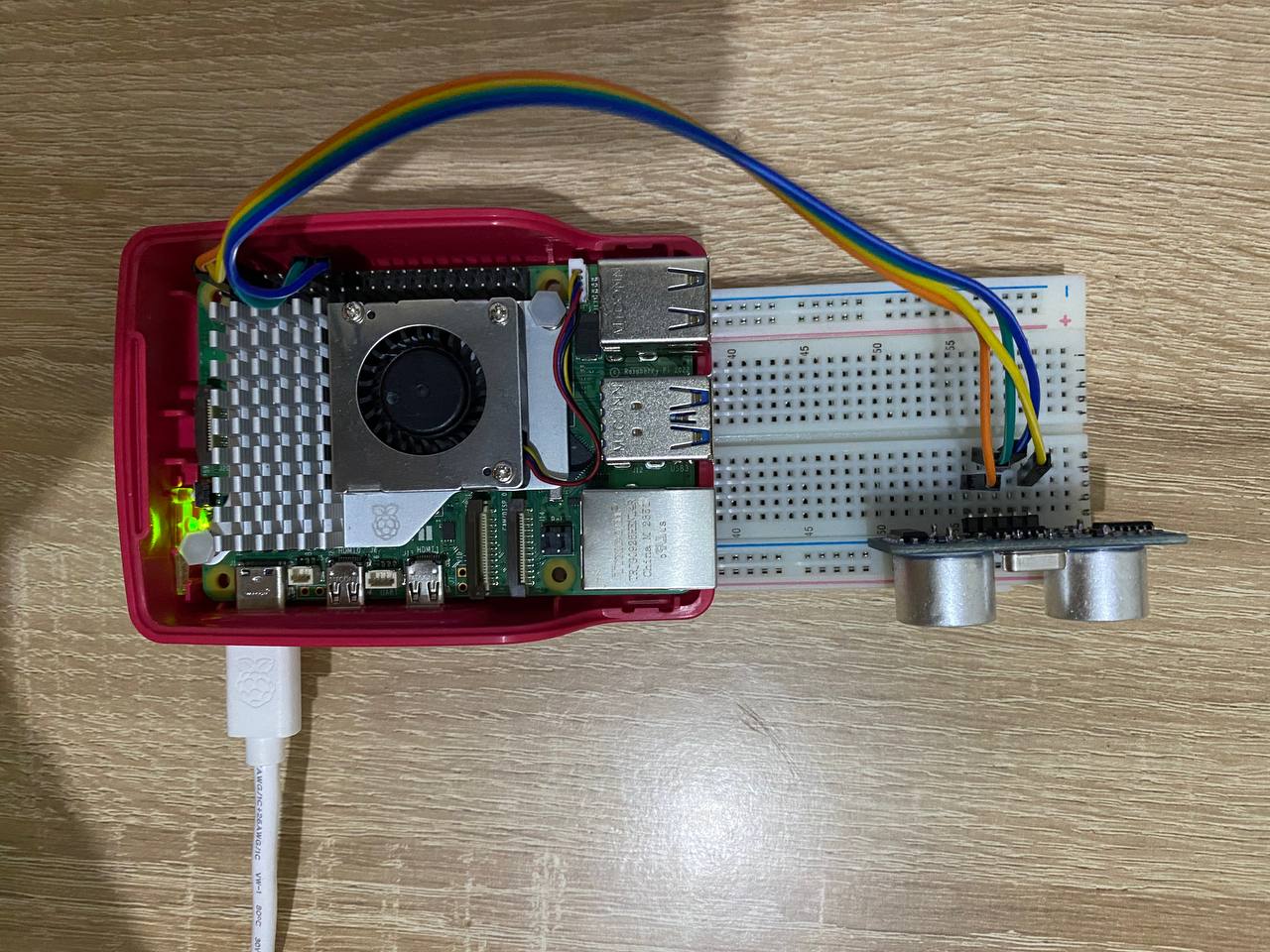Raspberry Pi Ultrasonic Sensor Project Using Python (HC-SR04 Tutorial)
Introduction
Ever wanted your Raspberry Pi to sense the distance to nearby objects, like a proximity alarm or parking assistant? This tutorial shows you how to connect and use an HC-SR04 ultrasonic sensor with Raspberry Pi using Python.
By the end of this guide, you’ll be able to measure distance in real-time with just a few lines of code.
What You’ll Need
Raspberry Pi (with GPIO pins)
HC-SR04 ultrasonic sensor
Breadboard and jumper wires
1 × resistor 330Ω (optional)
1 × resistor 470Ω (optional)
Python 3 installed (default on Raspberry Pi OS)
Tip: You may need a voltage divider to drop 5V from HC-SR04’s Echo pin to 3.3V compatible with Raspberry Pi.
Wiring the HC-SR04 to Raspberry Pi
| HC-SR04 Pin | Connect to Raspberry Pi |
|---|---|
| VCC | 5V (Pin 2) |
| GND | GND (Pin 6) |
| TRIG | GPIO23 (Pin 16) |
| ECHO | GPIO24 (Pin 18) |


Python Code to Read Distance
Here’s a simple Python script to read distance from the ultrasonic sensor:
import RPi.GPIO as GPIO
import time
# Setup
TRIG = 23
ECHO = 24
GPIO.setmode(GPIO.BCM)
GPIO.setup(TRIG, GPIO.OUT)
GPIO.setup(ECHO, GPIO.IN)
print("Measuring distance...")
try:
while True:
GPIO.output(TRIG, False)
time.sleep(0.5)
GPIO.output(TRIG, True)
time.sleep(0.00001)
GPIO.output(TRIG, False)
while GPIO.input(ECHO) == 0:
pulse_start = time.time()
while GPIO.input(ECHO) == 1:
pulse_end = time.time()
pulse_duration = pulse_end - pulse_start
distance = pulse_duration * 17150 # cm
distance = round(distance, 2)
print(f"Distance: {distance} cm")
except KeyboardInterrupt:
print("\nMeasurement stopped by user")
GPIO.cleanup()
How the Code Works
TRIG pin sends a 10µs pulse to start the ultrasonic burst.
ECHO pin receives the pulse reflected back from an object.
The time taken for the pulse to return is used to calculate distance using the speed of sound.
Expected Outcome
Once the script runs, your terminal will display real-time distance readings like:
Distance: 12.34 cm
Distance: 13.01 cm
Distance: 11.95 cm
This setup is useful for:
Obstacle detection
Level sensors
DIY parking systems
Motion-triggered alerts
Troubleshooting and Tips
🛠️ Readings are stuck at 0 or very high? Double-check your wiring, especially TRIG/ECHO pins.
🔋 Sensor not responding? Make sure you’re powering it via 5V and reducing the 5V ECHO output using a resistor divider.
Conclusion
You’ve just turned your Raspberry Pi into a distance-measuring device using an HC-SR04 sensor and Python. This project forms the base for smart robotics, automation systems, and interactive installations.
Comments (0)
No comments yet. Be the first to comment!
Leave a Comment